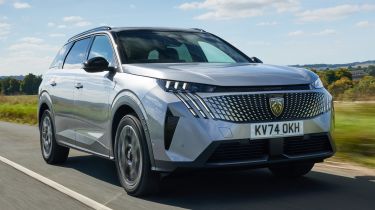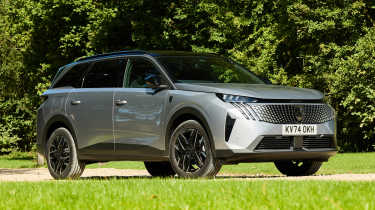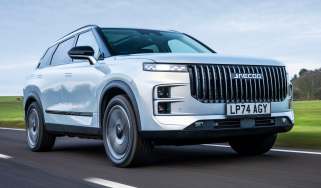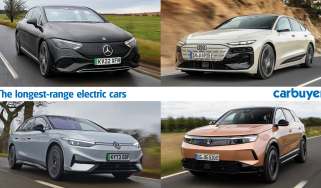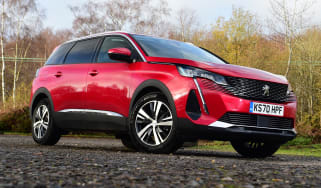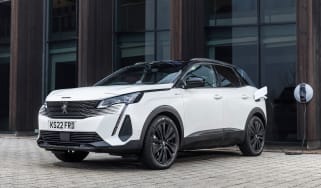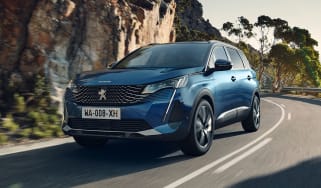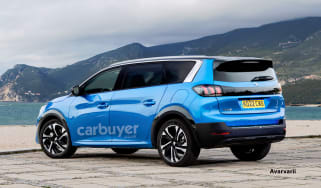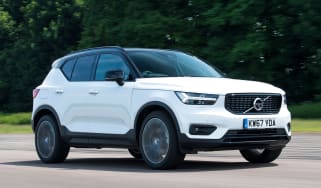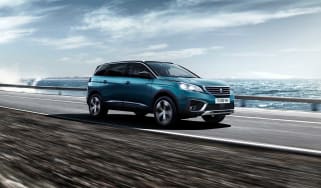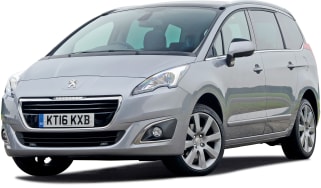Peugeot 5008 review – sharp styling, seven seats and a big boot
“The Peugeot 5008 looks great inside and out, comes with three levels of electrification and has seven seats”
Pros
- Large interior
- Attractive styling
- MHEV, PHEV or EV
Cons
- Only two ISOFIX points
- Quite firm riding
- Hybrid lacks power
Verdict – is the Peugeot 5008 a good car?
The seven-seat Peugeot 5008 is a clear upgrade on the outgoing car in most respects, with desirable looks, a modern and tech-filled interior and lots of rear cabin space. Diesel makes way for a choice of mild-hybrid, plug-in hybrid or pure electric power, with an option to suit most buyers. The 5008 Hybrid is by far the most affordable, but it’s not perfect – 134bhp isn’t much in a three-row SUV once filled with passengers and luggage, and it has a paltry 750kg towing limit.
Peugeot 5008 models, specs and alternatives
The Peugeot 5008 was one of the first examples of a model that morphed from a family MPV into a seven-seat SUV to keep up with buyers’ habits. That happened back when the second-generation launched in 2017, but this 2024 third-generation model also represents a major shift. It’s available as an all-electric E-5008 for the first time, and while diesel is now out, there’s also the choice of mild hybrid or plug-in hybrid petrol versions.
It’s the latter we’re focusing on here – we’ve got an in-depth review for the Peugeot E-5008 if you’d like more information on the electric model – and the mild hybrid brings down the price of entry for the 5008 to just over £37,000. It’s a busy field nowadays, and the 5008 has to be seriously impressive to tempt buyers away from the likes of the Skoda Kodiaq, Hyundai Santa Fe and Kia EV9.
Just like the smaller five-seat Peugeot 3008, there are just the two aforementioned engines available in the regular 5008, spanning two trim levels, so the days of studying a matrix of engines and trim variations are thankfully gone here. Stick with the entry-level Allure and the 5008 is hardly lacking kit, with features like a 21-inch ‘Panoramic Curved Display’ set of touchscreens, reversing camera, keyless entry, 19-inch alloy wheels and wireless smartphone connectivity and charging all thrown in.
More reviews
For many people, then, upgrading to GT trim is a “nice to have” rather than essential. Do so and you gain features like adaptive cruise control that can stop and start the car in traffic, a ‘Smart’ electric hatchback, heated front seats and steering wheel, 20-inch alloy wheels, a Black Diamond roof and upgraded exterior lighting.
There is a bigger difference between the engines on offer, which will fundamentally change your 5008 ownership experience. The mild hybrid only gets a tiny 0.9kWh battery and 22bhp electric motor, so the car rarely moves using electricity alone. Instead, the electrification is mainly there to give the 1.2-litre petrol motor a helping hand, and 134bhp isn’t a huge amount for an SUV capable of hauling seven people, their luggage and potentially even a trailer.
The 5008 Plug-in Hybrid (PHEV) gets a 1.6-litre petrol engine, a much larger 21kWh battery and a more potent electric motor, for a combined 192bhp. We haven’t tested it yet, but it cuts three seconds from the mild-hybrid’s 0-62mph benchmark. It’s also capable of up to 48 miles using just its electric motor, which isn’t class-leading, but still has the potential to drastically reduce running costs.
| Trim levels | Power options |
|
|
MPG, running costs & CO2 emissions
Every version of the Peugeot 5008 now comes with some degree of electrification, with the entry-level model featuring a hybrid powertrain, the mid-range model getting a plug-in hybrid system, and the E-5008 getting fully-electric power. Both the hybrid and the plug-in hybrid should be frugal, and the electric E-5008’s zero-emissions status makes it a cheap company car to run. Read more about the Peugeot 5008's MPG, running costs & CO2 emissions...
Engines, drive & performance
The Peugeot 5008 is offered as a hybrid, plug-in hybrid or fully electric model. While the smaller Peugeot 3008 suffers from unduly hard suspension and a resulting rough ride, the 5008 is more comfortable. The hybrid models are refined until their petrol engines kick in with a gruff noise, so the E-5008 is better in this respect. The mid-range plug-in hybrid is a good middle ground if you want the extra power and ability to do shorter drives around town as well as longer trips further afield. Read more about the Peugeot 5008's engines, drive & performance...
Interior & comfort
The Peugeot 5008’s interior will be a polarising feature for buyers. It gets the brand’s trademark small steering wheel, and you look over it – rather than through it – to see the digital dials ahead of you. Some will like this setup, but it can take getting used to. Otherwise, the Peugeot 5008 feels more upmarket than you’d expect, and the cabin has a futuristic feel to it. Read more about the Peugeot 5008's interior & comfort...
Boot space, practicality & dimensions
The Peugeot 5008 comes with seven seats from launch, though it’s possible a five-seat version could arrive later, prioritising boot space over passenger capacity. It’s easy to get to the rear-most row of seats thanks to the easy-to-use tip and slide centre row of seats, but there are only two ISOFIX points available if you want to mount child seats. The boot in the seven-seater is very spacious even with all seats upright, so the 5008 feels very practical. Read more about the Peugeot 5008's boot space, practicality & dimensions...
Reliability & safety
Peugeot performs well for customer satisfaction, coming in sixth place out of 32 manufacturers in the 2024 Driver Power survey. Reliability itself seems to be slightly better than average, with 20.8% of Peugeot owners reporting an issue with their car in the first year. Safety is yet to be put to the test by Euro NCAP. Read more about the Peugeot 5008's reliability & safety...
Peugeot 5008 alternatives
While the crop of seven-seat SUVs isn’t quite as large as the number of mid-size SUVs on offer, there’s still plenty of choice. Far from being generic-looking silver boxes, they all have distinctive styling and attributes too.
Large family SUVs:
Large electric family cars:
Should you buy a Peugeot 5008?
Anyone looking to upgrade from the outgoing Peugeot 5008 should find a lot to smile about. The new car looks sharper inside and out, gets the latest tech and comes with the choice of clean and efficient mild hybrid, plug-in hybrid or all-electric powertrains. They may baulk at the price of the latter, but we expect tempting leasing and finance deals will help level the playing field.
What about non-loyal buyers who are shopping across brands? The 5008 still has a lot going for it, with impressive space in the back and that eye-catching design. Compared directly against rivals, though, the Hybrid powertrain looks somewhat lacking in performance for a big SUV and the PHEV doesn’t offer class-leading electric range.
What is the best Peugeot 5008 for low running costs?
Aside from the all-electric E-5008, it’s the 5008 PHEV that takes the victory here. So long as you are able to charge its battery pack overnight, its electric range of 48 miles should be enough to cover off most local driving. This gives the 5008 PHEV its official range figure of more than 300mpg and CO2 emissions from just 18g/km.
What is the best Peugeot 5008 for families?
If you plan on loading the car up with passengers and luggage frequently, the Hybrid’s lack of grunt could become an issue. For that reason we’d suggest the PHEV or E-3008 are both a better bet. The GT also adds some nice features for families, such as a powered ‘Handsfree’ boot, front parking sensors and rear side window blinds. GT also adds an upgraded front centre console storage cubby and twin cupholders, while rear seat passengers get a central armrest with a smartphone holder and two cupholders.
What is the Carbuyer pick of the Peugeot 5008 range?
It’s possible to make a strong case for the PHEV and E-5008 depending on your circumstances and driving habits, but for the average private buyer with a low to medium mileage, we’d keep it simple and opt for the entry-level 5008 Hybrid in Allure trim. It’s the best value, and the only 5008 that dodges a £600 tax bill in years two to six.
How we tested the Peugeot 5008
We drove the Peugeot 5008 Hybrid on a mixture of British roads in September 2024.
